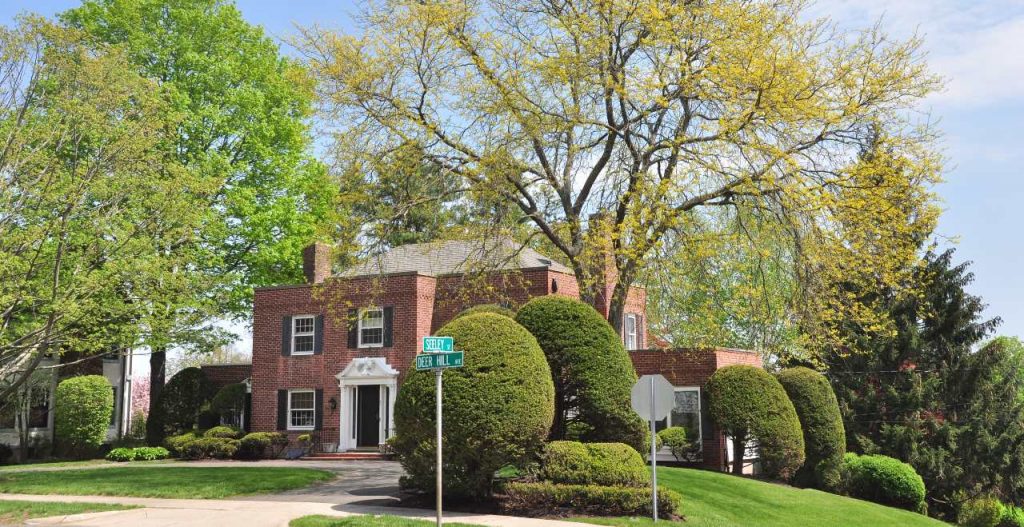Get Expert Financing
- Matched with investor-friendly lenders
- Fast pre-approvals-no W2s required
- Financing options fro rentals, BRRRR, STRs
- Scale your portfolio with confidence
Adjustable-rate mortgages – commonly known as ARMs – are popular because they typically come with lower interest rates, at least initially.
But they also carry a considerably greater amount of risk than the 30-year fixed rate mortgage, which fully protects against rising rates.
So when is an ARM mortgage the right choice?
An ARM is a mortgage in which the interest rate adjusts each year of the loan. It is set up as a thirty-year mortgage, but the rate will adjust each year based on a lender spread, known as the “margin,” plus a popular index, such as the SOFR.
Because ARMs are based on a shorter-term index than the 30-year fixed rate, rates tend to be lower than those loans. However, to make ARMs more predictable and stable, they come with a fixed rate period that generally lasts for the first five, seven or 10 years of the loan.
After that the fixed rate period, ARMs revert to one-year adjustable terms, in which your rate will change each year. But once again, to make the loan more stable, the adjustments come with limits on how high they can rise, commonly known as “caps.”
A typical cap may be expressed as something like “2/2/5”, or “5/2/5”. Under a 2/2/5 cap arrangement, the maximum your rate can go up on the first rate change is 2%. That means that if your initial rate on a five-year arm is 3.5%, the highest it can go on the first adjustment is 5.5%.
The most that it can rise on any subsequent annual adjustment is also 2%. And the maximum that it can increase over the life of the loan is 5%. So with a 5.5% initial rate, the highest rate you could ever pay on the loan would be 10.5%.
If the ARM has a 5/2/5 cap arrangement, you could be in for a rude awakening. That’s because the initial adjustment can increase your rate as much as 5%. Under that scenario, if your initial rate were 5.5% on a five-year adjustable, it could go to 10.5% at the end of five years. That would raise your payment by hundreds of dollars per month.
That’s why ARMs are considered to be riskier loans. The rate can increase substantially over the initial rate that you receive. It’s even possible that you will not be able to afford the payment at some point during the loan term.
Now let’s address the question, when is an ARM mortgage the right choice?
Generally speaking, the shorter the fixed period is on in ARM, the lower the interest rate will be. For example:
The bigger the loan, the more you might consider an ARM.
For example, a rate that’s 0.75% lower saves around $250 per month on a $500,000 mortgage, or $15,000 over five years.
On a $1 million loan? $30,000 over five years.
This is why ARMs are common on jumbo loans. Savvy buyers and homeowners know how much these loans can save them.
However, the opposite is true. An ARM on a $200,000 mortgage likely won’t make much of a difference in payment.
They are still worth considering in most scenarios, though. It doesn’t hurt to measure the payment difference and see if it’s significant for you.
Submit Your Loan ScenarioThis is the most common justification supporting the use of an ARM. If you were expecting to be out of the house within five years, then a five-year ARM can make sense. That’s because you will sell the house before the adjustable period kicks in.
What’s difficult about this strategy is that you can never know for certain that you will sell the home within five years. An expected job transfer may not materialize. A continued rise in property values may not happen. You may also face personal circumstances that require you to stay in the same property.
ARM loans are also a gamble in which you bet that interest rates will continue to be low or even fall lower in the future. This provides you with two advantages:
That has actually been the case for people who have taken ARMs for most of the past 30 years. The steady decline in mortgage rates has meant that people with ARMs have been able to ride interest rates down, without having to incur the costs of refinancing.
And now that rates are high again in 2023, ARMs may be a wise choice, since rates could fall in the future.
But if interest rates go into a long term cycle of steady increases, that dynamic will reverse. You will find yourself playing consistently higher rates and monthly payments on the ARM.
See whether an ARM loan is right for you.If there is a financial windfall in your future, one that will be large enough to pay off your mortgage, an ARM makes a lot more sense. You’ll be able to take advantage of the lower monthly payments during the fixed rate period, and then pay off the loan before it ever gets out of hand.
This can even work if you are able to make at least a significant partial payment on the mortgage. Since ARM loans are completely recalculated once an adjustment takes place, that calculation is made on whatever the outstanding balance of the mortgage is at that time.
For example, if you start with a $200,000 mortgage on a five-year ARM, but pay off $50,000 within the five-year term, your mortgage payment will be recalculated based on a remaining balance of $150,000, and not $200,000. The interest rate may be higher, but that may be offset by the much lower principal balance.
This may be the case if you expect to come into an inheritance, exercise employer stock options, or even sell off another piece of property. Just be sure that whatever the source of the windfall is, it’s reasonably certain that it will happen.
If you are considering an ARM, never underestimate the additional risk that you are taking on. You must also be absolutely clear that you are comfortable taking that risk with your home. That’s the reason why most people choose the fixed rate mortgage instead. Realistically, ARMs only makes sense under extraordinarily positive circumstances. Tread lightly!
Our advice is based on experience in the mortgage industry and we are dedicated to helping you achieve your goal of owning a home. We may receive compensation from partner banks when you view mortgage rates listed on our website.


